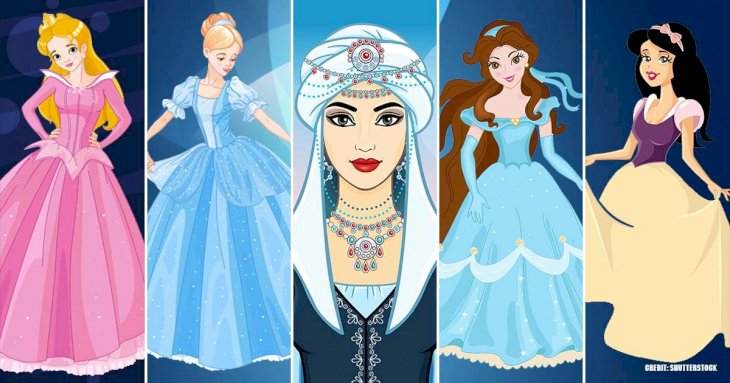
10 Disney Princess Controversies That Confuse Even True Fans
Many grew up watching Disney fairytales and waiting for the famous happy ending at the end, but not all Disney Princesses.
When someone thinks about Walt Disney princesses, what comes to mind is a gorgeous gown, a prince charming, and a happily ever after.
However, there is much more than meets the eye. Here are some of these princesses who have been involved in shocking controversies.
Cinderella
This is one of the favorite fairytales among children around the world. It depicts the life of a young and orphan girl who is treated like a slave, forced to do housework and chores, by a mean stepmother.
However, her destiny changes when a fairy godmother transforms her, and she meets a prince charming.
However, with the feminist wave that we've been having recently, Cinderella was no longer considered a positive role model for girls than the classic feminine stereotype. She spends her time cooking and doing chores, relies only on the prince to save her, and becomes a princess through marriage.
Aurora
Better known as the Sleeping Beauty, Aurora is the only child of two monarchs who receives a curse from a witch during her christening.
The evil fairy stated that she would fall asleep forever when she pricks her finger on a spinning wheel's spindle during her 16th birthday. The only way to break the spell is a kiss from her true love.
For Aurora, the controversy arose not only because she is completely helpless and spends most of the story in a death-like sleep but also because the kiss was not consensual. To make matters worse, in
Ariel
Ariel is the typical princess that would do anything for her soulmate, even if it means losing her voice to change her mermaid tail for some legs to go after a prince.
In the end, the Little Mermaid, with a rebellious spirit, gets Prince Eric without even speaking to him and has a daughter with him called Melody.
But the message that this princess sends to young girls is that they can get a man only based on looks, which is what Ariel did.
Secondly, she had to give up her family under the sea to go after a life with her boyfriend and future husband on land. Why did she have to make the sacrifice? Why didn't he go to the ocean?
Tiana
This young waitress is the first Afro-American princess in Disney, and her story was released in 2009. Tiana is a hardworking lady whose only dream is to open her restaurant, but finds a hurdle on her way when she is transformed into a frog after kissing a prince who is also one thanks to an evil witch.
First of all, the story is set in New Orleans, the home of many tragedies that have beset the Afro-American community. Additionally, the frog prince is not black and has a Middle Eastern name, Naveen. Finally, the film raises voodoo use as a racial implication.
Alice
Although this young little girl is not exactly a princess, it is a famous character that chases a White Rabbit into a hole and ends up in a wonderland with characters like the Cheshire Cat, the Queen of Hearts, and the Mad Hatter.
The critics of this movie are the drug references throughout the whole film. Alice eats a mushroom and drinks from weird bottles that cause changes in her size related to the highs and lows of drug abuse. This is without mentioning the caterpillar who is always smoking a hookah pipe.
Snow White
The 1937 Disney film depicts a lonely princess as white as the snow that lives with an evil stepmother who resolves to kill her. While escaping for her life into the woods, she meets seven dwarfs who help her and take her to their cottage.
So, maybe at this point, you understand part of the critics that surround this princess. She is considered a polygamist, living with seven members of the opposite sex. Furthermore, just as Cinderella, she is illustrated doing housework in the dwarfs' cabin.
The Princess of North Sudan
This film has not even been released, and it is already causing controversy. Based on a true story, a man from Virginia called Jeremiah Heaton goes to Egypt and Sudan to claim some land for her daughter to become a princess.
Disney found this story so unusual and inspiring that they plan to make a film about it, but people are not happy at all with this, especially for the fact that the first African princess will be, in fact, a white girl.
Belle
This girl first appeared in the movie "The Beauty and the Beast" in 1991. She is the daughter of an inventor looking for an adventure. But in her quest, her father is imprisoned by a beast that eventually becomes her soulmate after exchanging her freedom for his dad's.
The red flag about this princess is that she has been related to the Stockholm syndrome, a psychological condition in which hostages fall in love or develop a positive bond with their captors. Surprisingly, this involves women typically.
Pocahontas
She was a Native American and daughter of Powhatan, the paramount chief of the tribal nations in Tsenacommacah, a region in Virginia, USA. She saves the life of an Englishman named John Smith, who is the colonist of her land.
The bad news about "Pocahontas" is that it did not go well with Native Americans since the story illustrated in the movie is far away from the real one. Pocahontas and Smith had a daughter-father relationship, and Native Americans were not as wild as they seem in the production.
Jasmine
This princess is shown during the 1992 movie Aladdin, which is the story of a street urchin with Arab roots that discovers a magic lamp with a genie inside. He then disguises himself as a prince to gain the heart of the Sultan's daughter, Jasmine.
The polemic about this princess is her appearance. She is supposed to be of Arab descent, just like Aladdin, but her fair skin and facial features say the contrary. Additionally, her belly-baring outfit sexualizes Middle Eastern women.
Yes, we know that maybe your childhood was destroyed by these truths, and we are sure you never thought of those details when you were younger. However, it is a valuable lesson for grownups to be more cautious with what children watch. They could be learning immoral things from innocent cartoons.
